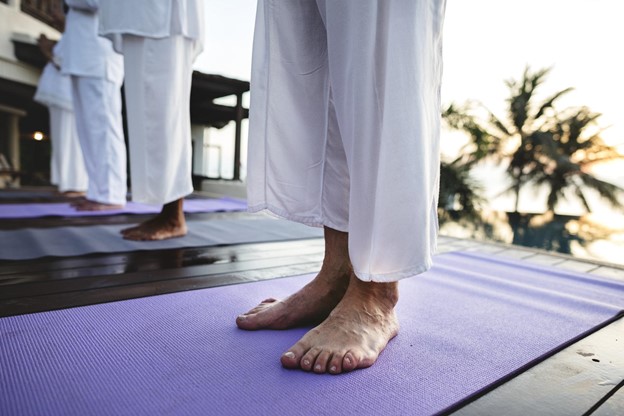Practicing yoga and meditation is one of the best ways you can care for yourself that is completely natural. Many people in retirement may worry they’re too old to start yoga, but that is absolutely not true! These practices help improve circulation, balance, strength, and mental well-being, which are all important goals for seniors to work toward.
Living Happier and Healthier
Unfortunately, stress and depression are common mental health problems for seniors. We often talk about these as mental health issues, but the reality is there is a strong link between depression and other aspects of your health that affect your entire body. For example, stress and anxiety are often associated with higher blood pressure, which can be serious for anyone at risk of heart disease. Depression and stress are even linked to dental health, because they can contribute to tooth decay and periodontal (gum) disease. On top of that, many of us hold tension in our jaws, leading to pain and other teeth issues. These are just a few examples of how relieving stress through yoga and meditation can lead to overall better health.
Yoga and meditation are two separate practices, but they’re often lumped together because yoga involves more than just movement and stretches; it also includes breathing mindfully and taking time for quiet meditation. This means that both practices help relieve tension, while calming your mind and body. The end result for your health is more than just feeling relaxed. Meditation especially has been shown to lower blood pressure and inflammation, while improving circulation and digestion.
Besides being calming, yoga is also a great form of exercise for seniors, and it delivers other health benefits that allow you to age with more energy, strength, balance and flexibility. The best news is that these health improvements translate into a happier and more independent way of life. Once you get started with your practice, you may even find that yoga itself is a way of life. Shape Magazine describes yoga as a way to discover, or re-discover, yourself.
Getting Started
One of the easiest ways to get started is to find a local class. Many senior centers and YMCAs offer yoga, and some private yoga studios even offer senior classes. While your basic Medicare policy doesn’t cover yoga classes, you may want to look into a Medicare Advantage plan. Many Advantage plans cover fitness center memberships through the SilverSneakers program, and these centers often offer yoga classes.
If classes aren’t an option, you can also practice meditation and yoga from the comfort of your own home. If you’re brand new, start with a simple online guide, like this one that includes the top yoga poses for seniors and instructions for how to end your practice with meditation. Or if you prefer guided instruction, following along with an online video, guided by a yoga instructor, makes you feel almost like you’re in a live class.
If you have any conditions that might keep you from doing yoga, it’s worth looking into ways of making modifications. For example, chair yoga is an option that most people can do even if you have limited range of motion. Many seniors who have arthritis also hesitate to try yoga because they worry about pain, but the Arthritis Foundation provides an excellent guide for ways you can make adjustments so that yoga works for you. With these adjustments, yoga can even improve pain from arthritis and help you develop strength and better balance.
If you take a class in a studio, they will probably provide everything you need, but you may still want to bring your own mat. If you’re practicing at home, it’s a good idea to get a few other props, such as a block and blanket, to make adjustments easier.
The good news is that it really doesn’t take much time or money to start your yoga practice. If you or a senior you care for is thinking about giving it a try, don’t hesitate! There really is no better way to enjoy life more, while aging healthier.
Photo credit: Pexels


Recent Comments